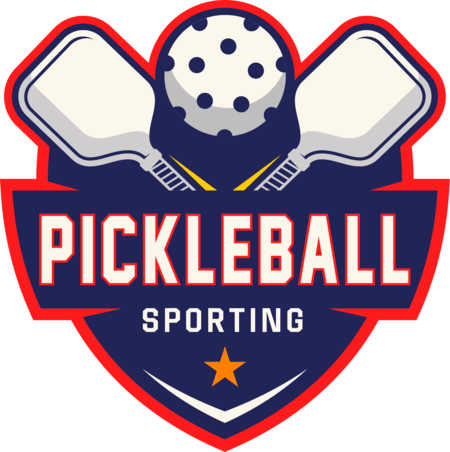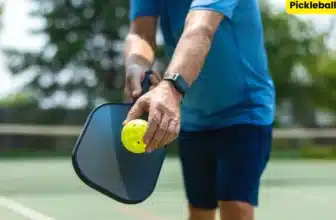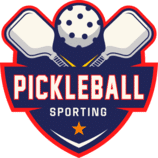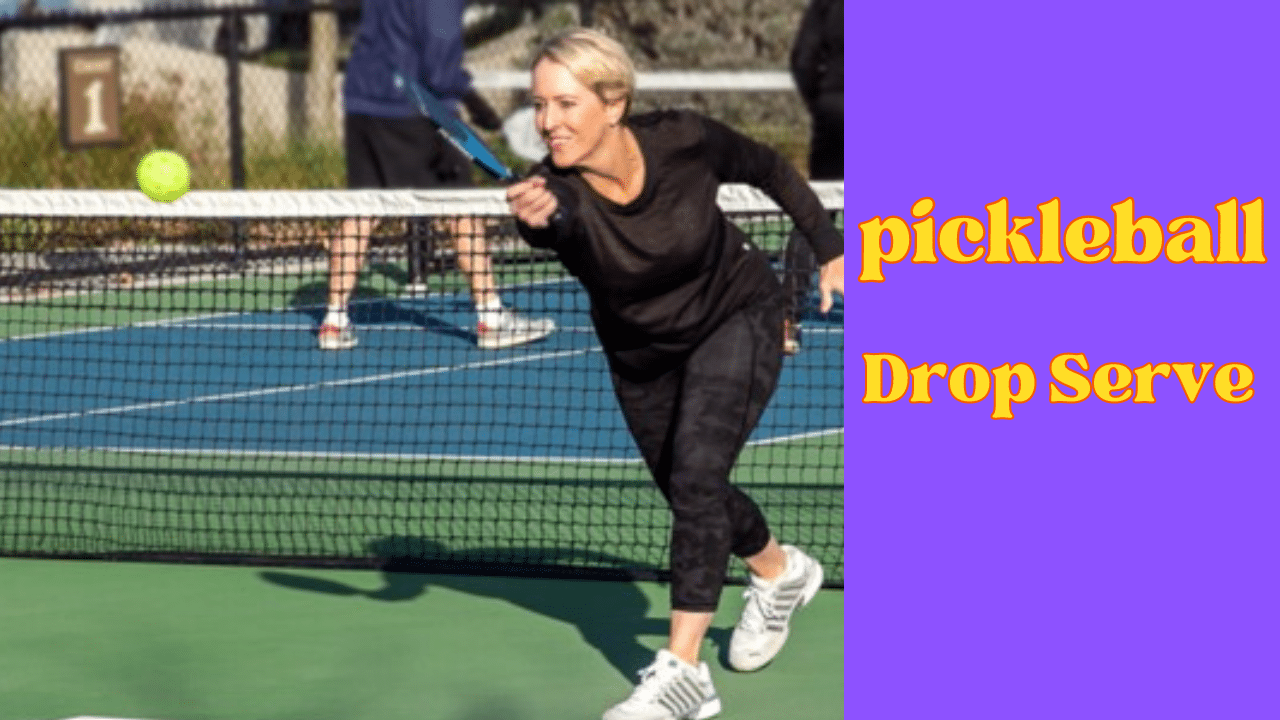
Do you know there are two types of serves in pickleball? one the traditional volley serve and second a drop serve. The main and probably the only difference between the two is that the first one means hitting the pickleball out of the air before it bounces and the second one means hitting the pickleball after it bounces on the court surface.
The world of pickleball can get heated over many things, and the drop serve is no exception. This new serving option has divided players into 2 categories, those who love and adopt its simplicity and others who are always questioning its effectiveness.
But whether you’re a seasoned pro or a curious beginner, understanding the drop serve is important.
What is a Drop Serve?
The pickleball drop serve provides an alternative method to the traditional serve. Instead of hitting the ball in mid-air, you simply drop the ball and hit it after it bounces at least once. There’s no limit on how high you can hold the ball before releasing it. And this is what allows for a natural serving motion in this type of serve.
This pickleball drop serve technique can be very helpful for beginners who are trying to master the underhand serve technique. While some experienced players may prefer the traditional serve, the drop serve remains a fair and legal serving option.
Why the Controversy?
The drop serve was introduced in 2021 and was made permanent in 2022. It overlooks several rules of the volley serve. Firstly, there’s no need for an upward swing, secondly the pickleball paddle can be above the wrist at contact, and lastly the serve can be struck well above the waist.
This has some players arguing it takes away from the skill and strategy involved in a traditional serve. But, there’s another group of people who believe it makes the game more accessible for beginners. The new pickleball drop serve spin also speeds up play and reduces the likelihood of faults. As a result, it has generated mixed reactions within the pickleball community.
Is a Drop Serve Legal?
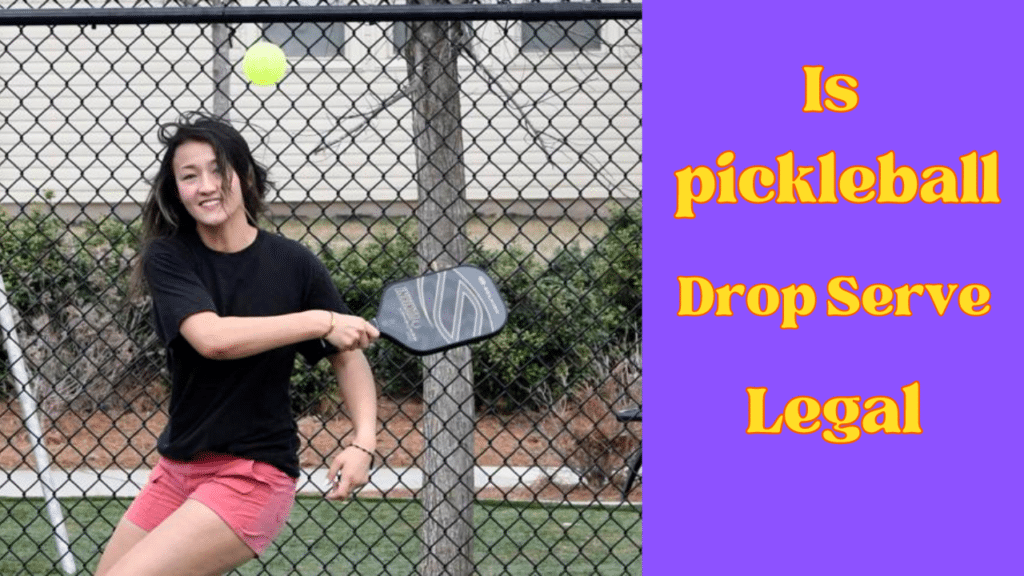
Now you must be wondering, is it legal to execute the shot this way? Well, absolutely yes! As long as you follow these simple pickleball drop serve rules:
- One-handed release: The ball can only be dropped from your hand or paddle.
- Natural height: There’s no limit on how high you can hold the ball before dropping it.
- Bounce first: You can only hit the ball after it bounces at least once. There’s no limit on how many times it bounces.
- Visible release: The receiver (and referee, if present) needs to see the ball when you release it.
- Regular footwork: You still need to have one foot behind the baseline, not touching the court or baseline, and cannot extend into the sideline or centerline.
- No added force: Gravity is your only friend here. You can’t throw the ball down or toss it up before the bounce.
- Forehand or backhand: Once the ball bounces, you can hit it with either a forehand or backhand swing.
Should You Use a Drop Serve?
Here’s where it gets interesting. The drop serve offers some significant advantages:
- Improved consistency: Because it mimics your groundstrokes, the drop serve can help beginners develop consistency in their serving motion.
- Two-handed backhand friendly: Players with a strong two-handed backhand can finally utilize it in their serve for more power and control.
- Easier spin: The drop serve allows for more freedom in adding spin to your serve compared to the restrictions of a volley serve.
- Serving variety: It adds another weapon to your serving arsenal, keeping your opponent guessing.
- Easier to learn and enforce: Beginners find it simpler to learn than a volley serve, and referees have less to monitor regarding legal contact.
However, there are also some drawbacks to consider:
- Less deceptive for advanced players: Skilled players can easily read a drop serve, making it less effective at higher levels.
- More variables for mistakes: The bounce adds an element of unpredictability, making it susceptible to wind, court conditions, and even temperature affecting the bounce height.
- Limited height: Unlike a volley serve, you can’t hit the ball above your reach after the bounce.
So, Who Should Drop Serve?
The answer is clear: beginners and players struggling with serve consistency. The pickleball drop serve technique simplifies the learning process and allows you to focus on developing a solid serving foundation. But, for experienced players with a successful underhand serve, the drop serve might not offer a very good advantage. Intermediate players who want to add variety to their serve can still benefit from incorporating the drop serve occasionally.
FAQs
What is a drop-serve pickleball serve?
A drop serve in pickleball is a serving technique. It is basically when you let the ball drop from your hand and hit it after it bounces on the ground, instead of hitting it directly out of the air.
Why don’t pro pickleball players use drop serve?
Pro pickleball players usually don’t use the drop serve because it can be less predictable and harder to control. They prefer the regular serve, which they can hit more accurately and with more power.
Will pickleball drop serve become permanent?
It’s not certain if the drop serve will become a permanent rule in pickleball. The rule is currently being tested, and whether it stays will depend on feedback from players and the impact on the game.
What is an illegal serve in pickleball?
An illegal serve in pickleball is when the server breaks any serving rules, such as hitting the ball above waist level, serving above the server’s navel, or failing to keep both feet behind the baseline until the ball is hit.
The Final Takeaway
The pickleball drop serve is a valuable addition to pickleball, especially for beginners. It shortens the learning curve and helps build a stronger foundation for the sport. While it might not be a game-changer for pro players, it is a good alternative serving option and keeps the game interesting. So, you can follow the new technique keeping in mind the benefits of this technique in addition to a few disadvantages of drop serve.
